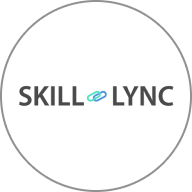Modified on
Understanding Boolean Operations in AutoCAD for Civil Engineers

Skill-Lync
Welcome back to AutoCAD Essentials for Civil Engineers blog series. In this blog, we dive into the powerful world of Boolean operations in AutoCAD, which include Union, Subtract, and Intersect. These tools are indispensable for civil engineers working on AutoCAD civil basic designs or advanced 3D models. By mastering Boolean operations, you can efficiently combine, modify, and refine your models, a skill highly valued in the industry.
Whether you're enrolled in an AutoCAD online course or pursuing a civil engineering course, understanding Boolean operations is key to enhancing your 3D modeling expertise.
Overview of Boolean Operations
Boolean operations in CAD software allow you to manipulate 3D solids with precision. Here’s a breakdown of these essential tools:
1. Union
- The Union tool merges two or more solids into a single cohesive object.
- Example: Combine structural elements like beams and columns into a unified framework.
2. Subtract
- The Subtract tool cuts one solid from another, making it ideal for creating openings or recesses.
- Example: Subtract a window opening from a wall model.
3. Intersect
- The Intersect tool retains only the overlapping volume of two or more solids.
- Example: Use this to visualize the shared space in intersecting structural components.
These operations are fundamental in AutoCAD for civil engineering full courses and Skill-Lync AutoCAD Training programs.
Applications of Boolean Operations in Civil Engineering
Boolean operations simplify complex design tasks, such as:
- Designing Openings for Windows and Doors: Use Subtract to model precise openings in walls.
- Combining Elements: Merge multiple solids to form complex structural components.
- Analyzing Overlaps: Determine intersecting areas for structural analysis or clash detection.
These applications are covered in AutoCAD civil engineering 3D tutorials for beginners, ensuring that even novice users can quickly grasp their potential.
Boolean Operations in Practice
Example 1: Creating a Window Opening
- Model a solid wall using the Box tool.
- Create a smaller solid to represent the window space.
- Subtract the smaller solid from the wall to create an opening.
Example 2: Designing a Complex Framework
- Use the Union tool to merge columns, beams, and trusses.
- Apply Subtract to refine the framework and add recesses.
Boolean operations are integral to modern design workflows and are emphasized in AutoCAD training and certification programs.
Conclusion
Mastering Boolean operations in AutoCAD empowers civil engineers to design with accuracy and efficiency. From creating intricate models to refining structural details, these tools are essential for professionals aiming to excel in the field. For a comprehensive learning experience, enroll in a Skill-Lync AutoCAD Course for Civil Engineers or explore an AutoCAD online course with certificate to enhance your skills.
This blog is part of our ongoing AutoCAD Design Series. If you missed the previous posts, check them out here.
Would you like to have a more interactive experience going through the AutoCAD essentials?
Skill-Lync has released a FREE comprehensive course covering AutoCAD Essentials for Civil Engineers in detail! Check it out here.
If you’re looking to go deeper into AutoCAD Essentials check out Skill-Lync’s AutoCAD certification course.
Check out our hands-on course today and add AutoCAD to your list of skills!
Let’s get #IndustryReady together, one skill at a time!
Author
Uma Maheswari K
Author

Skill-Lync
Subscribe to Our Free Newsletter

Continue Reading
Related Blogs
Explore the fundamentals of vehicle dynamics and ultimate trends in the field from design and modeling to control with Skill Lync's exclusive course on the subject. Read about how Skill-Lync's CAE courses can help you get employed.
28 Jul 2020
In this article, we will briefly discuss the working, applications, and features of the one-dimensional systematic simulation tool, GT-Power, in Emission Control Strategy, engine calibration, hybrid vehicle modeling. Read about how Skill-Lync's CAE courses can help you get employed.
28 Jul 2020
This article offers a brief introduction to the globally accepted standard of Geometric Dimensioning and Tolerancing, and its importance for the entire manufacturing process. Read about how Skill-Lync's CAE courses can help you get employed.
28 Jul 2020
In this blog we will read about Going a step into Biomechanics and how Skill-Lync's CAE course will help you get employed.
09 May 2020
The powertrain is the most prominent source of vibrations that affects the driving experience for the people on board. This blog from Skill-Lync examines these vibrations to help enhance that experience.
21 Aug 2020
Author

Skill-Lync
Subscribe to Our Free Newsletter

Continue Reading
Related Blogs
Explore the fundamentals of vehicle dynamics and ultimate trends in the field from design and modeling to control with Skill Lync's exclusive course on the subject. Read about how Skill-Lync's CAE courses can help you get employed.
28 Jul 2020
In this article, we will briefly discuss the working, applications, and features of the one-dimensional systematic simulation tool, GT-Power, in Emission Control Strategy, engine calibration, hybrid vehicle modeling. Read about how Skill-Lync's CAE courses can help you get employed.
28 Jul 2020
This article offers a brief introduction to the globally accepted standard of Geometric Dimensioning and Tolerancing, and its importance for the entire manufacturing process. Read about how Skill-Lync's CAE courses can help you get employed.
28 Jul 2020
In this blog we will read about Going a step into Biomechanics and how Skill-Lync's CAE course will help you get employed.
09 May 2020
The powertrain is the most prominent source of vibrations that affects the driving experience for the people on board. This blog from Skill-Lync examines these vibrations to help enhance that experience.
21 Aug 2020
Related Courses
